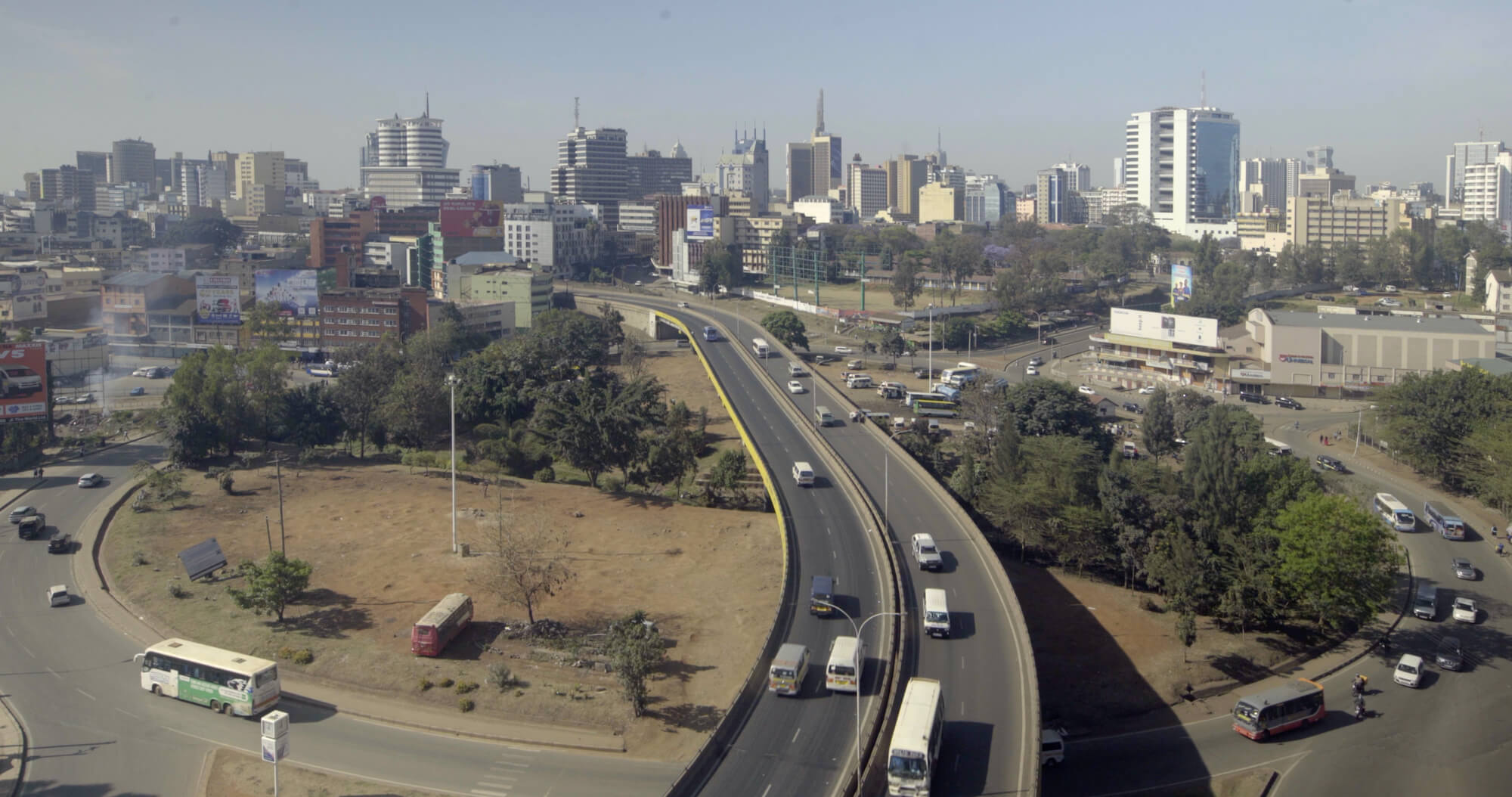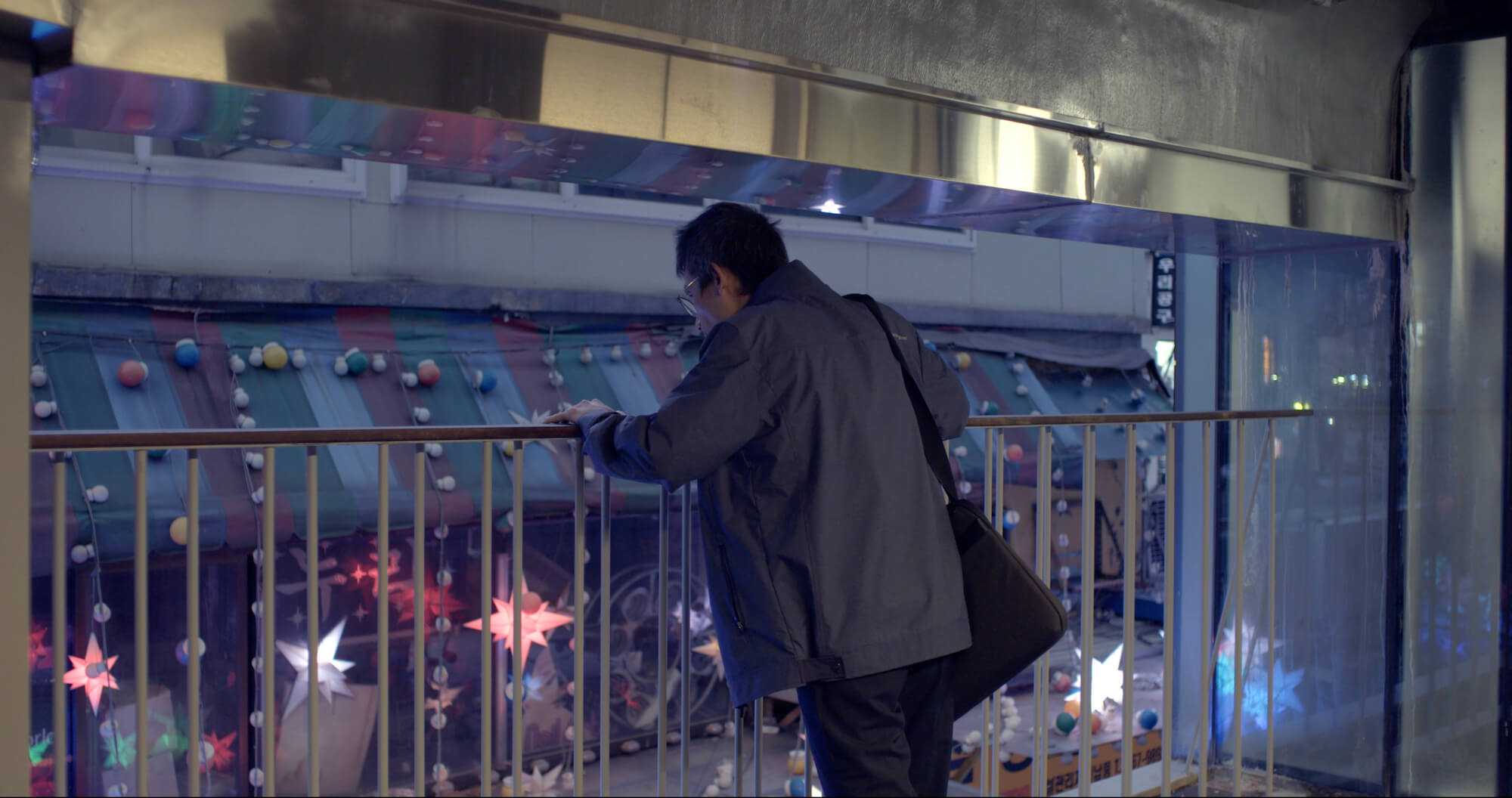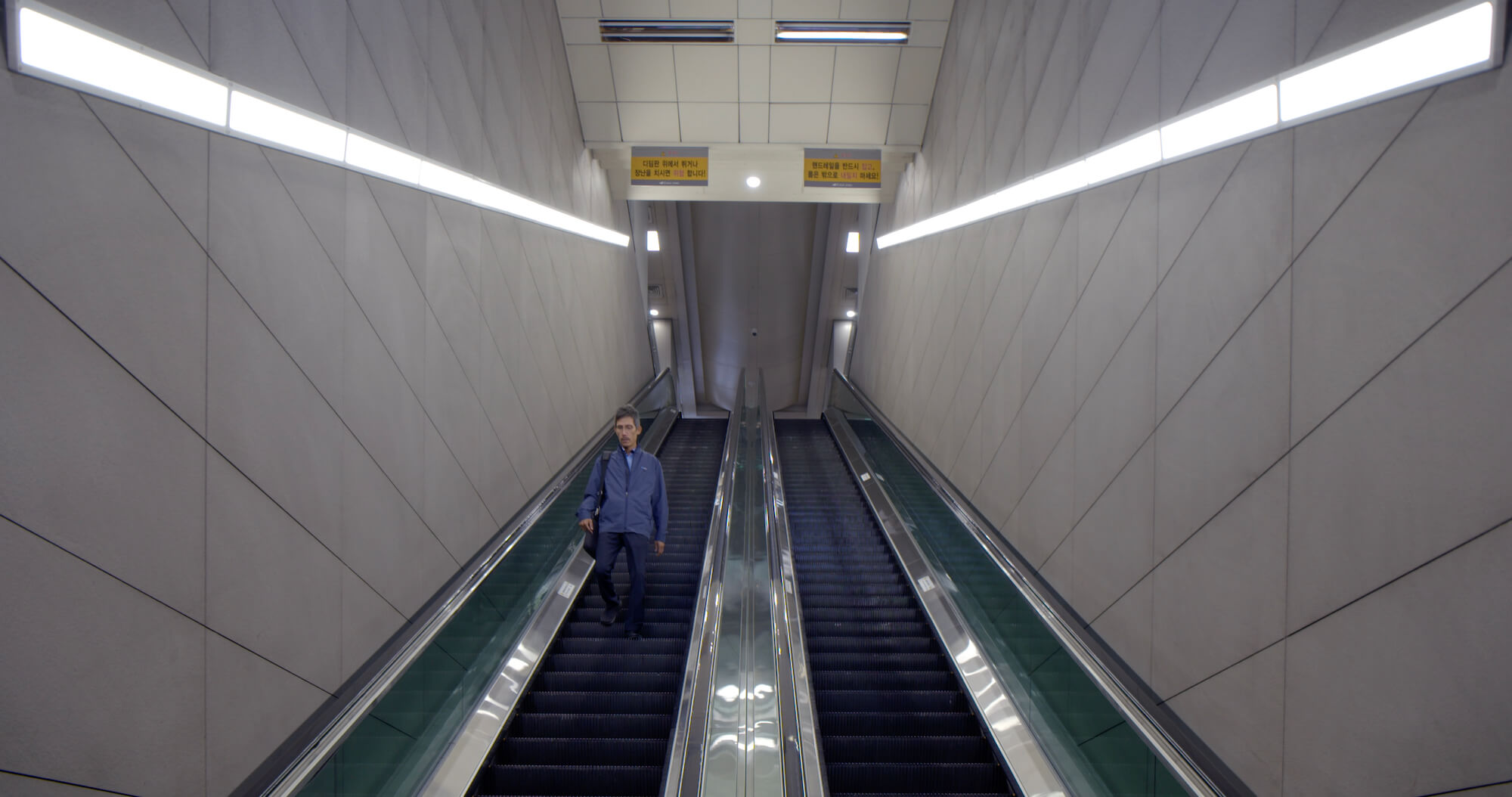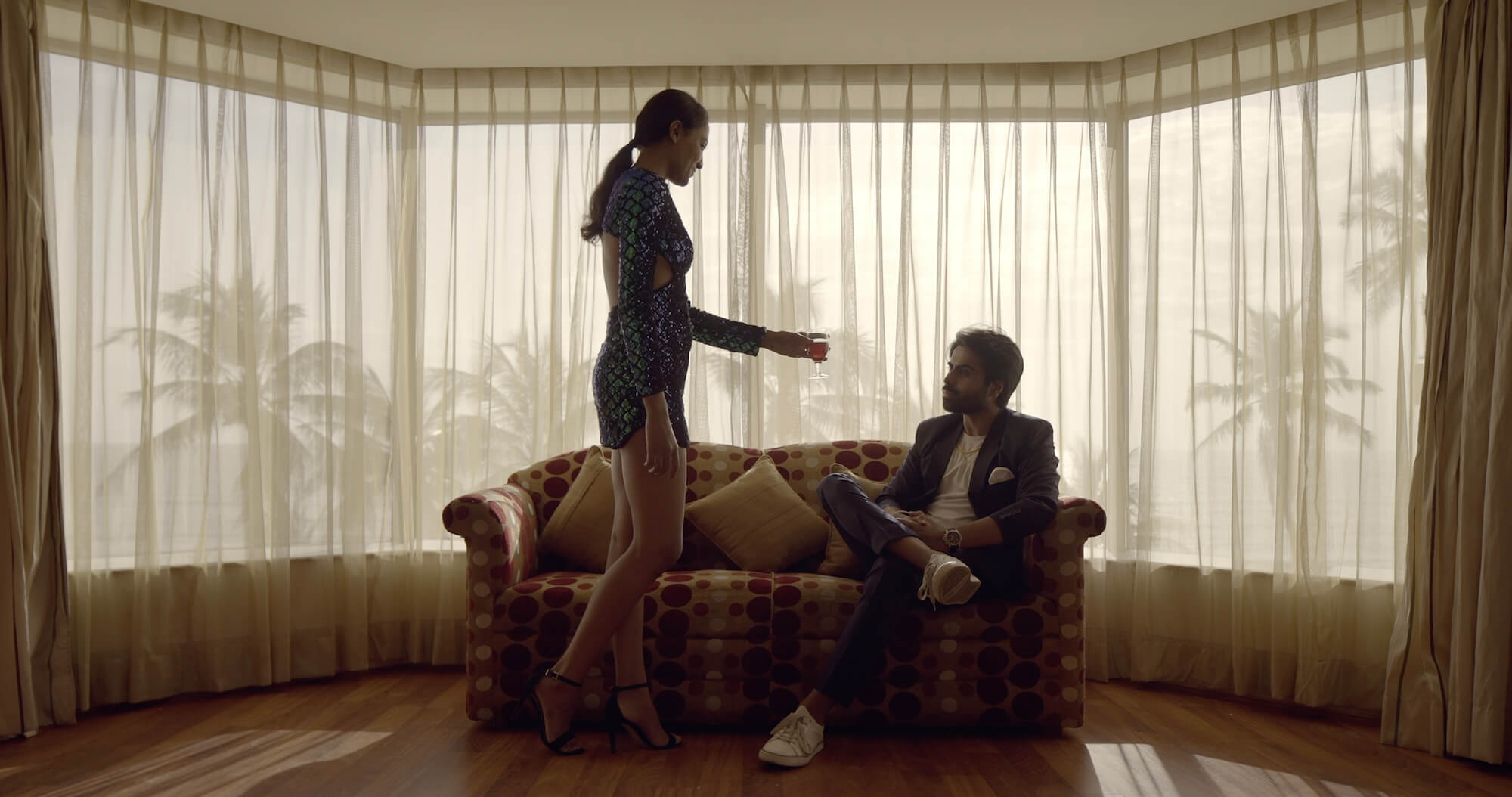
Long-time DN alum and documentarian Nils Clauss joins forces once again with fellow filmmaker Neil Dowling for short documentary Crossroads: Life in the Resilient City, the official film for the Seoul Biennale of Architecture and Urbanism. Crossroads: Life in the Resilient City looks to chronicle the evolution of five major cities (New York, Seoul, Mumbai, Paris and Nairobi) through the eyes of individuals living there. The filmmaking pair adopt a creative non-fiction approach to their short which blends both real and scripted elements in order to reflect the truth they uncovered on their travels whilst they were researching for the film. Clauss and Dowling take these stories and structure them through binary themes such as ‘Heritage and Modern’ and ‘Natural and Artificial’, taking influence from Dominique Perrault’s Five Crossroads. DN caught up with the co-directors who broke down their creative non-fiction approach, their interest in intertwining filmmaking with architecture, and the challenges of shooting in multiple countries simultaneously.
How did you come to work with the Seoul Metropolitan Government on this project and how did you develop the concept for it with them?
The Seoul Metropolitan Government commissioned a team of curators for the Seoul Biennale of Architecture and Urbanism 2021. The curators who were in charge of the film projects are Green Kim and Jeongwook Cha. Nils had worked with Jeongwook before. In 2014 Jeongwook, as an independent curator, commissioned Nils to make two films for the Samsung owned Korean Heritage Preservation Society named YÉOL. YÉOL supports various programs funding master and young artisans. In relation to these programs Nils made Memories of an Artisan and Translating Furniture. Since then Jeongwook has been following Contented’s work and also having seen if…, the film Nils and Neil had made as the opening film at the World Architects Congress in Seoul in 2018, he thought that Contented would be the right team of filmmakers to make the official film for this year’s edition of the Seoul Biennale of Architecture and Urbanism.
We felt that it was important to make a film that looked at the human experience at these Crossroads, where the city is changing both physically and culturally.
Fortunately based on our previous work, Jeongwook and Green together with the Seoul Metropolitan Government (SMG) and Perrault Architects (since Dominique Perrault was the director of this year’s edition) had a lot of trust in us and gave us a lot of space to develop the concept for our film. We were given a guideline at the start, which requested to base the film onto Dominique Perrault’s theoretical concept of the five Crossroads that together create the Resilient City, which is also the theme of this year’s Biennale. So the film was supposed to illustrate that concept. SMG pitched us to build a documentary based on the Netflix series Abstract: The Art of Design. We were not opposed to that concept, but from the start thought that we should avoid the most obvious choice. That would have been to interview experts and illustrate the points they made with images and examples from cities around the world. Instead we felt that it was important to make a film that looked at the human experience at these Crossroads, where the city is changing both physically and culturally, where technology, resources, inequality, population growth, all play a role in the mix of how people adapt and modify their habits and behaviours and shape their surroundings to fit the new realities. Fortunately SMG and Perrault Architects were really open to our ideas and did not mind at all that we were taking their initial ideas of what that film should be in a different direction.



It’s a creative non-fiction documentary, what does that term mean to you?
For us, creative non-fiction is a fusion of real and scripted elements. For this project there wasn’t time to document everything in real-time. For example in the New York segment the main character is a young woman who organises a Kickstarter campaign and raises money for personal safety alarms that she distributes to vulnerable people in her neighbourhood. This process had already occurred but Caroline the young woman behind the alarm idea also happens to be an actress so it made it possible for us to cast her to play herself and tell what was in fact her own story.
There are lots of different interpretations around what documentary is and how faithful it should be towards the truth. But anytime you make a film you are making choices in how you present the material, there’s always some kind of manipulation of the narrative, so we were very comfortable with using this format of mixing traditional documentary elements such as the talking head and observational documentary with scripted elements including fantasy elements. All of these strands can come together in service of broader truths. The aim for us was to ask questions and start a conversation about the problems and possible solutions that people face in urban environments around the world. The questions we are asking are genuine and we want to ask them in an interesting way. The issues are very real and we believe that a lot of people can relate to them.
How did your approach to filming change with each major city?
We actually made a big effort to keep a uniform approach stylistically so the film could come together as one whole entity. For each city, we prepared a detailed breakdown of the script by making a shotlist that included reference images for each shot. But this also had its challenges because our production teams may have been more used to working in their own style depending on what kind of projects they normally work on. Then there are differences that arise due to the different specific subjects for each city. On top of that, there are of course practical problems that each of our teams had to navigate. For example access to locations, security issues, covid restrictions all came into the reckoning. What was definitely important though was local knowledge. And even if the project didn’t always run 100% smoothly it was an interesting learning experience since we had been looking at pursuing this model of multi-location production for a while as a way to offer clients something that didn’t seem possible after the pandemic changed the world.
We also wanted to make sure that in the cities we selected, we had people who we worked with before. Besides Seoul and Paris, which Nils and Neil had covered based on where they are located, we worked with a producer in India that we had worked with before on a Hilton India campaign back in 2019. For New York, we collaborated with a young female director/DoP, who had worked on an internship with Contented in 2018, during her summer break while studying at film school in New York. In Kenya we had someone Neil worked together with on one of his BBC projects. Unfortunately that film team pulled out a few days prior to the shoot. Fortunately we quickly found a new team, which came highly recommended through a friend in the US, who does a lot of global and remote shooting.

I read that a motivation for you both in making this film was being able to work on a project centred around architecture, what interests you in architecture from a filmmaking perspective?
Architecture has just been a common interest for both of us since way back, something that was an interest, both independent of and intertwined with our interest in film. When Nils was young, he wanted to follow in the footsteps of his grandfather and his brother, who became architects. But when Nils’ parents said that they don’t need another architect in the family he was discouraged, but he later drifted back to architecture through his master thesis in university which analysed space and architecture in Wong Kar Wai’s Happy Together. This study was set against the backdrop of the upcoming handover of Hong Kong to China. Nils then moved to Korea, he had worked as a professional photographer and was the winner of the European Architecture Photography Awards in 2011.
When Neil moved to Korea, he was encountering a completely new landscape for the first time, which also inspired him to make his first feature film titled Finding Joy, which in a way is a road-movie around the city of Seoul and reflected Neil’s appreciation for his temporary new habitat. This curiosity around the big metropolitan city was a big driver for both of us to get out and discover the city through our cameras whether that was making films or taking stills. And it just grew from there. Buildings and cityscapes can create a layer of drama. It’s like a set that’s always changing with the light and it’s there for you to play with.
You’ve worked as co-directors for a number of projects now, what benefits does that bring to production?
We have different skill-sets and different personalities and when we work on projects together it’s a good combination. It might also have something to do with where we are from, Germany and Ireland. Basically it’s important to have someone to bounce ideas off and to be able to connect with creatively. Perhaps while working together we also embolden each other to do things that we wouldn’t do while working on solo projects.
Anytime you make a film you are making choices in how you present the material, there’s always some kind of manipulation of the narrative.
Different to our other mutual projects, this was the first time for us to work together remotely. If it hadn’t been for the pandemic, we probably would have joined forces at least in some of the cities we were shooting in. Since Neil has left Seoul, part of working together on bigger global projects was also based on the fact that it was giving us an opportunity to hang out and reconnect as friends and not just as filmmakers.


Given the challenging nature of shooting across five major cities, what were the biggest filmmaking lessons you learned that you’ll take into future projects?
The fact that we were shooting in five major cities, this was obviously an ambitious starting point. A lot of the problems we had to face were mainly related to budget. It meant that we only had one shoot day per city (even though Nils and Neil added an additional day to their shoot in Seoul and Paris), the teams had to be pared down to a skeleton crew and a small mobile set-up in terms of equipment. In the end this led to some extra work in post which Nils handled for all five segments.
During production we felt it was a challenge to find the right balance in terms of how much creative freedom to hand over to our local teams. We wanted to give them enough space to do their own thing and also enable them to keep their segments authentic to their home city, and of course there are cultural nuances that are important to capture. But handing over full creative control was not easy since we wanted to achieve a similar stylistic approach and tone across the five cities. It was also important for us that they believe in the project and our vision and get on board with what we were trying to achieve because we couldn’t match the full commercial rate and therefore needed our partners to buy into the project on a creative level. This only worked out since we had relationships with most of the filmmakers from before.
Our local producer in Seoul was very meticulous in getting all the permits sorted due to the Covid situation. Nils was really thankful for her efforts, especially since he would have shot without permits in Seoul for a project like this in the past. But during the time of the Seoul shoot, South Korea had the strictest regulations since the start of the pandemic, which made it particular hard and also expensive to secure the locations we needed for the film. When we were shooting we had every location secured, except one. And when we tried to grab a quick shot at this one location we got busted by security and one of the vendors, who supported our shooting, ended up in a huge fight with security. So it clearly showed the importance of location permits – in particular during times of Covid.
The biggest lesson that we’ll take into future projects, is probably that remote shooting is not easy. This was our first experience of handling a production where we are only partially on the ground. It takes a lot of production skills to manage this type of shoot. Also most people are sort of tired of getting on Zoom calls these days. So if you are on the ground communication is much easier and you have so much more control over making sure that things go in the right direction. With remote production (based on a scale like this, where you don’t dial yourself into the remote sets) there is the point where you need to let go and just have the confidence that everything goes well. Taking a first look at the footage then is an interesting experience there can be some surprises, good and bad, but hopefully you have enough options to leave some room if one particular part doesn’t quite come off.

What’s next for Contended?
After delivering this project we need to move on to some individual work and personal projects before getting back to the drawing board and figuring out what’s next. What’s very appealing after working a lot on shorter commercial work is to move on to some longer form projects. We have some documentary as well as fiction projects that we need to make some decisions on.
And what will you both be working on next individually?
Neil has been working regularly with BBC Storyworks on short documentaries about tech, innovation, architecture, sustainability and social issues in Norway where he is based and across Scandanavia. Nils has a couple of requests to work on a few long form documentaries that are scheduled to shoot next year. One of them is a documentary on the Korean Hanawon re-education system for North Korean defectors, which is directed by Danish filmmaker Frederik Sølberg. Then he is also working on a documentary with director Suyee Jung, with whom he has recently worked on a concert film/documentary featuring Korean girl band BlackPink. This new documentary will be on trees, which will be a nice way to take a close look at what the natural other than the urban architecture has to offer.


